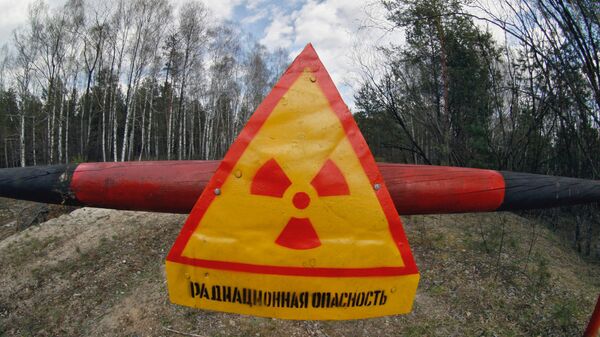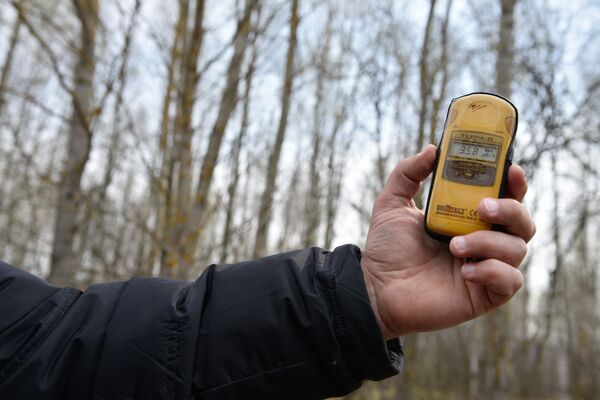Sputnik: In your view, how do politics affect such disasters as the Fukushima incident?
Majia H. Nadesan: Politics is an inevitable dimension of social life. Unfortunately, consolidated political power over critical decision-making can have catastrophic consequences, particularly when decision-makers are driven by singular logics that are intolerant of dissent.
We see in the case of nuclear energy how centralization of decision making power legitimized by symbolic appeals to national and economic security have produced never-ending catastrophes, illustrated best by Hanford in the US, Chernobyl in the Ukraine, Mayak in Russia, and Fukushima Daiichi in Japan.
READ MORE: Chernobyl Nuclear Disaster 32 Years Ago: What You Need to Know
Each of these catastrophes poisons air, soil, and water as toxic radionuclides migrate, bio-accumulate, and bio-magnify in biological life.
Although no authority will deny the hazards of radioactive activity and the challenges of nuclear waste management, the institutionally vested logic of nuclear, what Gabrielle Hecht referred to as "nuclearity," routinely seeks to contain and trivialize representations of radiation risk. We saw this tendency toward trivialization in the WHO's rush during the early stages of the Fukushima Daiichi disaster to declare no long-term health risks.
It is relatively easy to contain and trivialize representations of radiation risk because effects for all but the most extreme exposures are protracted and do not manifest equivalently across exposed populations because of variations across exposure forms and conditions and the contingencies of biological vulnerabilities. Most troubling, the transgenerational genetic and epigenetic effects of elevated exposure to chemically toxic and radioactive elements are studied least frequently of all and yet may pose the greatest risk to biological life.
READ MORE: Toxic Waste Asset: Chernobyl Radiation Enters the Cryptocurrency World
Containment and trivialization of radiation risk are foundational to the symbolic logic of nuclear security, yet blind us to the hazards we've engineered into our infrastructures, as observed by Ulrich Beck.
Sputnik: What measures need to be taken to prevent these catastrophes from happening?
Majia H. Nadesan: Efforts to redress catastrophic risks must first and foremost acknowledge the scope and severity of hazards. Powerful governmental and corporate organizations vested in the nuclear industry and its symbolic logic of national security are often unwilling to take this first step and so we see efforts in the US to extend the operations of antiquated reactors and in Japan efforts to return Fukushima refugees to areas with still-elevated radiation levels.
Failure to acknowledge infrastructural hazards across the nuclear supply, utilization, and waste cycles promises more disasters and each one will contribute to the genotoxic load of radionuclides circulating and concentrating in the biological life upon which we depend.
Sputnik: What are your thoughts on the way the previous catastrophes were handled?
Majia H. Nadesan: It is quite instructive to compare how Chernobyl was managed as compared to Fukushima. There is little doubt that the Soviet deployment of hundreds of thousands of liquidators was on a scale that has not yet been surpassed. The Soviets also set the exposure level at a fraction (5 millisieverts) of the up-to-twenty millisieverts of annualized exposure now allowed by Japan's government. However, many observers note that the autocratic nature of the Soviet system and the availability of space for relocating refugees contributed to the more aggressive mitigation and evacuation in Chernobyl as compared to Japan.
That said, I believe there has been a shift in the management of risk globally towards "adaptation" and "resilience." The nuclear control paradigm has ceded the inevitability of accidents, but by forcefully trivializing risk, has created a symbolic rationale for requiring individuals and communities to adapt to increasingly contaminated environments. Risk reduction techniques are individualized in everyday decisions such as what food to eat and whether to allow your children to play outside or not as you adapt to your more contaminated environment.
Sputnik: In your view what are the most critical risks impacting disasters like Chernobyl and Fukushima?
Majia H. Nadesan: The most critical risks illustrated by the management of the Chernobyl and Fukushima nuclear catastrophe derive from the failure of learning and the attendant and deepening willingness of governments to individualize radiation risk management in the wake of radiological emergencies.
Together, the trivialization and individualization of risk management externalize nuclear's costs and thereby preclude transparent comparative analysis of the risks and benefits of competing energy supply chains. More nuclear catastrophes are an inevitable outcome of this narrowing of options.
Sputnik: Certainly catastrophes of such proportion have led to governments improving their work in the nuclear industry, do you think there is any chance that a similar disaster may occur?
Majia H. Nadesan: There is no doubt that more nuclear disasters are on the horizon as aging nuclear infrastructures are tested by earth's forces, including earthquakes, volcanic eruptions, and climatic changes, and by the inevitability of human error and malice (e.g. cyber-attacks).
I suspect that although the incidents of severe accidents will increase, the public will hear less about these accidents. Driven by the logic of adaptation, governments across the globe are re-thinking allowable exposure levels. In addition to increasing exposures standards, governments may censor or otherwise limit access to data on measured pollutants. For example, we see in the US how the EPA's Radnet System shutdown monitors and limited access to beta data in the months and years following the Fukushima disaster. The public's right to know appears to be faltering.
Since radiation detection requires access to specialized equipment, controlling perceptions of radiation risk may be easier to achieve than controlling actual exposures.
I am not optimistic about our collective future.
The views and opinions expressed by Majia H. Nadesan are those of the analyst and do not necessarily reflect those of Sputnik.




